![]()
|
A
Meakin (Ltd) Alfred
Meakin (Tunstall) Ltd |
Location and period of operation:
|
A Meakin
(Ltd) |
Tunstall |
1873 1913 |
1913 1976 |
| Earthenware
manufacturer at various works in Tunstall,
Stoke-on-Trent,
England.
The
father, James Meakin had four sons - James, George, Charles and Alfred -
who all became successful pottery manufacturers. - see more on the Meakin Brothers -
|
|
"According to an 1881
advertisement, Alfred Meakin manufactured ironstone china and white granite
ware, suitable for export. Examples of their ironstone export wares are
illustrated in the Wetherbee and Heaivilin collectors’ guides.
In addition to wares for export, ordinary domestic and traditional tablewares were made, such as the Bleu de Roi dinner ware, presented to King George V and Queen Mary on their 1913 Royal Visit to the pottery. Tiles were also manufactured by Alfred Meakin from the 1890s featuring art nouveau floral designs and the company were still reported as being involved in tile making in 1922. In 1932 children’s ware, such
as Peter Pan and decorated wares, such as this hand-painted plate (See
below) were being made. Art Deco designs were manufactured. A company
promotional leaflet of 1949 states that they were famous for coloured banding.
Their products were used on public transport such as the Flying Scotsman.
Myott-Meakin revived the use of the Alfred Meakin backstamp for bone china in 1985 but this range (some of which was manufactured in China) was discontinued late 1989/early 1990 to concentrate on earthenware production. The majority of Myott-Meakin production was exported."
Source acknowledgement: Staffan Jones-Hughes |
FACTORIES:
1875 - Royal Albert Pottery; Victoria Pottery (built 1858); Highgate Potteries, Parsonage Street, Tunstall (known collectively as Royal Albert, Victoria & Highgate Potteries)
1930 - Newfield Pottery (in addition to above); (by 1928, known collectively as Royal Albert, Victoria and Newfield Potteries).
1957 – c.1980 Victoria and Highgate Works (new)
c.1980- Alexander Works , Cobridge (built by Myott in 1902)
also (1949) owned the Furlong Mill as a subsidiary company preparing materials.
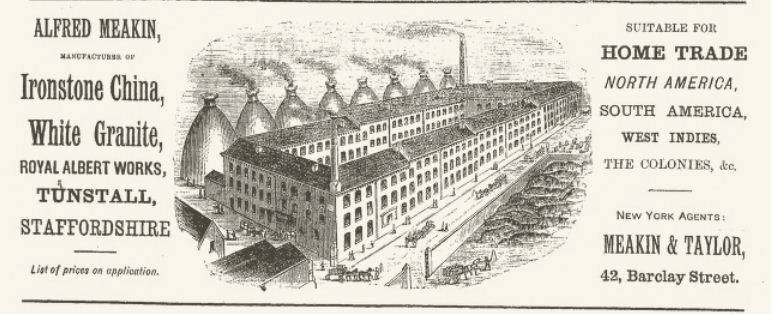
Alfred Meakin
manufacturers of Ironstone China, White Granite,
Royal Albert Works, Tunstall, Staffordshire
The
Pottery Gazette, American and Canadian Edition, January 1st 1880
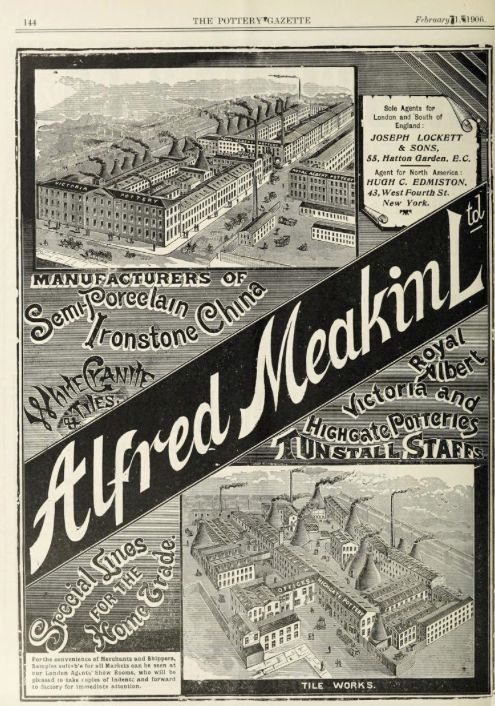
Alfred Meakin Ltd
manufacturers of Semi-Porcelain, Ironstone China, White Granite & Tiles
Royal Albert, Victoria and Highgate Potteries, Tunstall, Staffs
The Pottery Gazette, 1st
February 1906
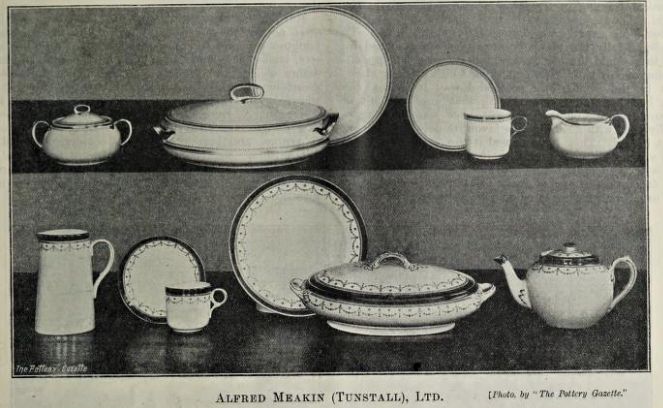
|
Alfred Meakin (Tunstall), Ltd., Royal Albert and Victoria Potteries, Tunstall, have recently made large additions to their already extensive buildings, and amongst the many improvements and extensions one of our representatives had the pleasure of being conducted through one of their new decorating shops, which for size, healthy surroundings, and adaptability to its purpose is probably unrivalled throughout the Potteries. We reproduce two views of this room, prepared from special photographs. The firm, whose productions have a world-wide reputation, was established so far back as the year 1873 by the late Alfred Meakin, who very soon won a unique position in the American trade, for which he especially catered, and made his name famous for the excellent quality of his white granite and decorated goods. After his death the business was carried on by his son Alfred J. Meakin whose early death came as a shock to the trade. Fortunately, at this critical crisis in the history of the firm passed into the hands of that prince of potters, the late Robert L. Johnson, and is now under the active management of his sons, who received their commercial and technical training in the largest ceramic concern in the world. The management is thus marked by youthful vigour and experienced knowledge of the trade. To catalogue fully the many beautiful designs produced by this firm would tire our readers, but we cannot help mentioning one or two. The first thing which attracts attention is the wonderfully successful way in which the firm has been able to deal with that most difficult of colours mazarine blue. To see a huge warehouse practically filled with goods in this favourite decoration was a sight indeed. They have named it the "Bleu de Roi," and a more suitable appellation it would be hard to find, for, with its deep rich tint and beautifully velvet surface, the decoration is one of truly regal splendour. Besides the usual embellishment of gold lines, they do a variety of uni-coloured and multi-coloured borders, all of them harmonising beautifully with the mazarine band, and making very rich and telling effects. An illustration of one of these accompanies this article. We also show another decoration, very simple in design, but very telling in effect, consisting of a decoration in the new matt gold and a border something after the manner of the well known key border. An illustration in black and white does not, of course, convey anything like a full idea of the effect of this combination, which has to be seen on the ware to be appreciated. There are many other effective designs, and, what is perhaps more important to the dealer in bulk lines for which the firm especially caters, the quality and finish of their white goods is very remarkable. Samples of all these can be seen at their London showrooms, 25, Holborn Viaduct, where their courteous representative, Mr. Ernest Dean, is ever ready to welcome buyers. The impression left on a visitor to this extensive works is that he has been round one of the most go-ahead and up-to-date establishments in the ceramic industry. Pottery Gazette, 1st April 1913 |
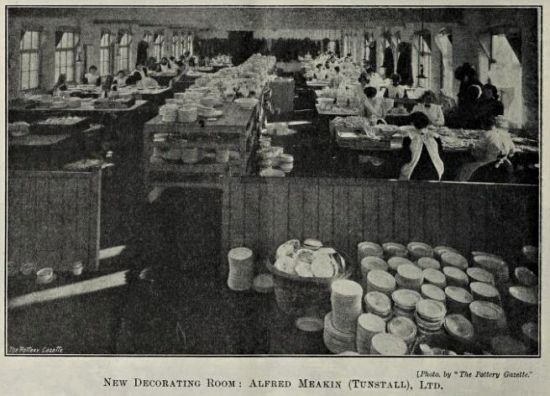
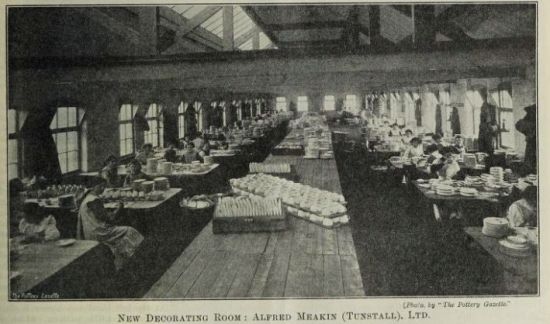
New Decorating Room : Alfred
Meakin (Tunstall), Ltd
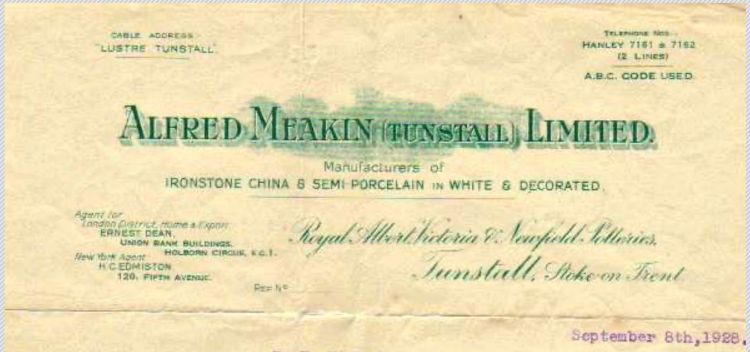
Alfred Meakin (Tunstall) Limited
Manufacturers of Ironstone China & Semi-Porcelain in White & Decorated
Royal Albert, Victoria & Newfield Potteries
letterhead dated September 8th 1928
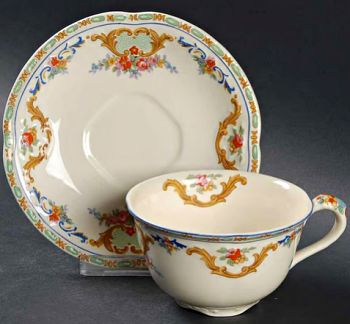
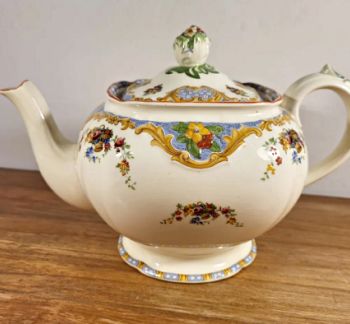
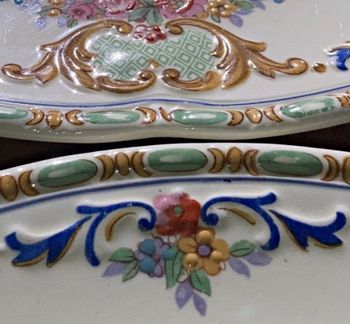
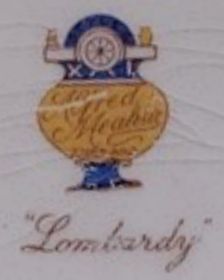
example of the Lombardy
pattern
a moulded raised decoration with hand
coloured flowers & scrolls with a beaded border
likely to have been introduced in the 1930's and continued until the early 1940s
photo source: online marketplace
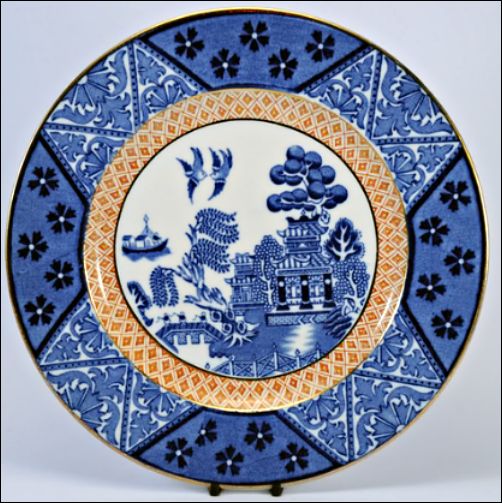
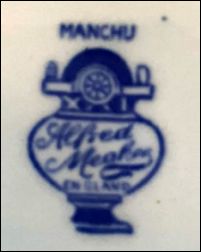
"Manchu" - a Willow style pattern
thought to
have been introduced before the 1930's
|
"Manchu" refers to the Manchu people, an East Asian ethnic group from Northeast China |
photo acknowledgement: katoomie.com
Marks used on ware for identification:
|
Many
marks on ironstone ware incorporated the Royal
Arms. In 1896 Alfred Meakin was incorporated as a Limited Company so marks with 'LTD' are always post 1896. However
not
all marks post 1896 include 'LTD' - the use seems rather random.
|
|
this mark on a white ironstone toothbrush holder dates from the first years of the operation of Alfred Meakin and so is c.1873. It is derived from the former C & A Meakin mark and the 'C' has been removed from the stamp - this will have been as a stop-gap measure until new Alfred Meakin stamps were made. photo courtesy: Cadence Drink |
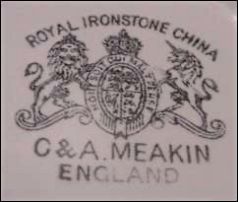 Royal Ironstone China C & A. Meakin England
|
|
c. 1891+ |
c. 1897+ |
Royal Ironstone China
marks incorporating the Royal Arms were often used on ironstone ware
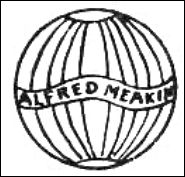
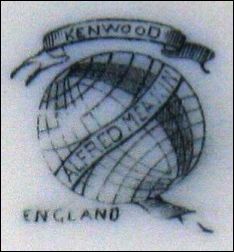
globe mark c. 1875-97
the mark with 'ENGLAND' is likely 1891-97
|
c. 1891+ |
c. 1897+ |
In
1896 Alfred Meakin was incorporated as a Limited Company
so marks with 'LTD' are always post 1896
NOTE: not all marks post 1896 include 'LTD'
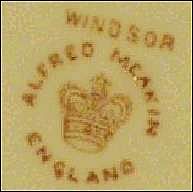 |
 |
c. 1907+
Note that the example with the pattern name 'WINDSOR' does not have 'Ltd'
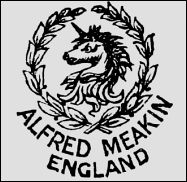
Alfred
Meakin
England
c. 1914+
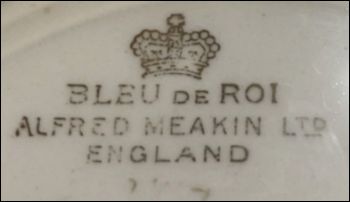
Alfred
Meakin Ltd
England
c. 1914+
"Blue de Roi" is the
pattern name
this was a popular Alfred Meakin pattern
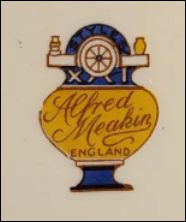
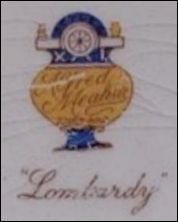
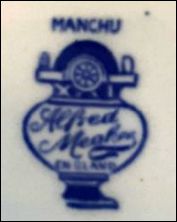
Alfred Meakin 'Oriental' style vase mark
this
mark is not documented in the usual reference books and was not widely used
it appears that it was only used on the Lombardy & Manchu patterns
possibly from the late 1920s to early 1940s
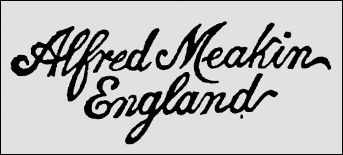
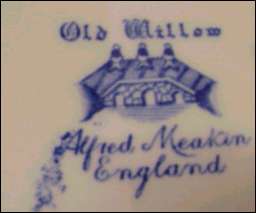
Alfred
Meakin
England
script mark c. 1930+
Note: 'Ltd' no long appears in marks from c.1930 onwards.
OLD WILLOW' being the famous Willow Pattern.
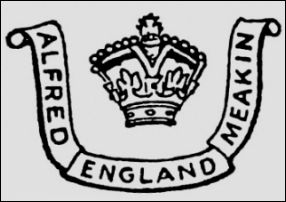 |
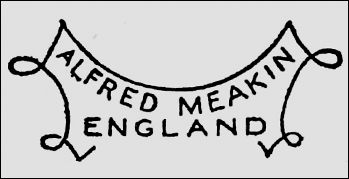 |
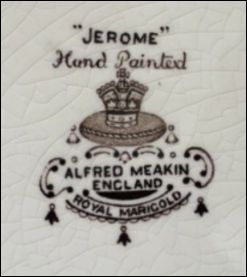 |
c. 1937+
Ware was
produced for the British Government for use
by the armed services and government restaurants
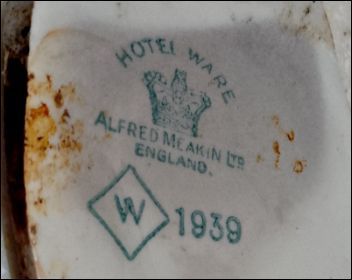 Hotel Ware Alfred Meakin Ltd England W 1939
|
 Alfred Meakin England G VI R 1944 The mark shown indicates that the ware was produced for and supplied to the British Government; it was ultimately property of the Crown/Government, hence the GR-VI Cypher. This mark is there to distinguish the piece from being normal ‘utilitarian’ ware for public sale during the period surrounding the Second World War. Alfred Meakin (and others) were given government contracts throughout the late 1930s and into the 1940s (WWII) and produced canteen ware - most likely for the armed services and government restaurants. The year of manufacturer is generally included. |
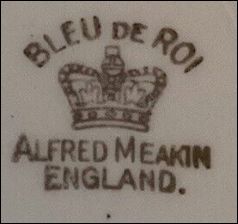
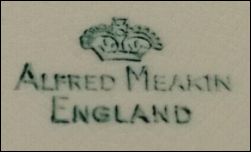
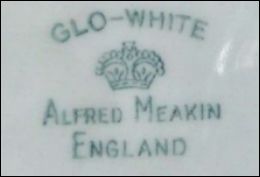
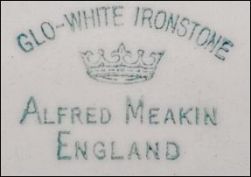
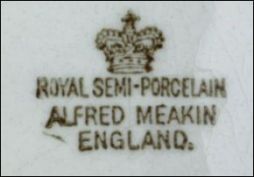
1945 +
post war marks
slight variations occurred
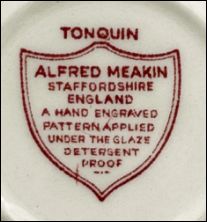
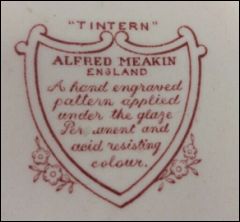

marks generally used in the 1940-60s
a number of potters used such
phrases as "hand engrave pattern", "under glaze"
"detergent and acid resisting"
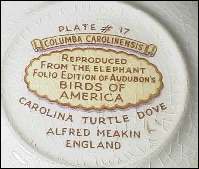
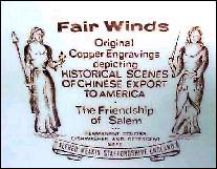
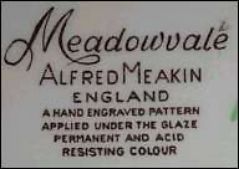
examples of marks used on specific pattern ranges
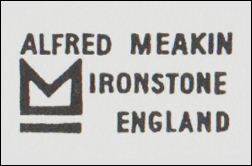
mark used on ware produced in the 1960s and 70s
- click for details of Alfred Meakin factories -
Questions, comments, contributions? email: Steve Birks
|
Page created 16 November 2014 updated: 13 Oct 2025 - examples of Lombardy and Manchu patterns added |